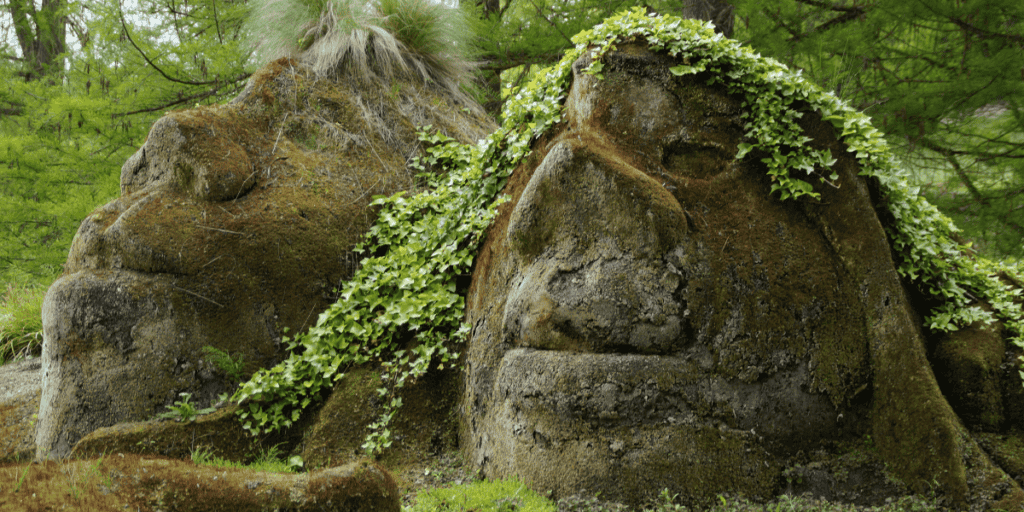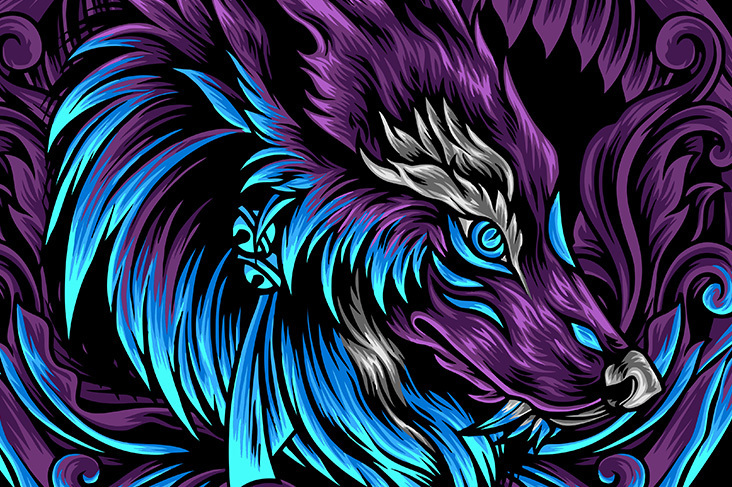Norse mythology is derived from the Myths of the North Germanic People, which emerged from Norse Paganism and continued up until the rise of Christianity in Scandinavia and into the present-day Scandinavian folklore.
The creatures which made the heart and soul of the mythological world of the Nordic people were unique and fascinating in their own ways.
Amazing and Astonishing Creatures in Norse Mythology

We take a look at some of them who have managed to captivate the imagination of the ancient Nordic people and still continue to do so today. Here are they.
1. Draugr
The Draugr were undead who roamed the ancient Nordic crypts. They were creatures who arose from the bodies of the dead, mostly from people who were evil in life or practiced black magic.
Certain lore indicates that the Draugr roamed around the crypts, protecting them from plunderers and adventurers. They were beings with supernatural strength and had an unsatiated thirst for blood.
According to another popular lore, it’s believed that they even roamed the Icelandic landscapes attacking the people and livestock. With their rotting bodies, they were feared by Man and beasts alike.
The Nordic people considered the Draugr as the protectors of the crypts and tombs. And that they were destined to roam the black depths of the crypts and catacombs of the dead for eternity. Eventually, sealing the fate of any poor soul who dared to venture into their unholy residence.
2. The Mare
The Mare is thought of as a malicious creature in Norse mythology. The ancient Norse considered it to be an ill omen, a creature that haunted the dreams of the living.
Portrayed as a female demonic creature, the mare sat on the chest of animals or people and drew the breath out of them.
And, as the legend says, she rode horses. The nordic people believed that if a horse was found tired in the morning, it was the one that a mare had ridden at night. They further believed that the presence of Braids in one’s hair in the morning meant that a Mare had visited them in the depths of the darkness of the night.
The Mare was considered a harbinger of worse things to come, but its presence is already quite disturbing. Those who saw the mare were sure it was but a premonition of a darker night ahead.
Did you know: The Mare is where the word Nightmare is derived from, also the now commonly known condition as Sleep paralysis
3. Jotnar
The Jotnar were considered to be the equivalent of Giants in Norse mythology. But it is many times a misconception due to the modern interpretations, as the Jotnar are a race in itself.
The Giant Ymir was the first being to exist at the time of creation, and hence the Jotnar are considered to be the first race that came into existence.
The Norse God Odin is considered to be half Jotan, and so is the God Thor, who is considered around three-quarters Jotan. Odin and his two brothers slew Ymir the Jotan, and the Nordic cosmos was formed.
Thus began the war between the Jotan and the Gods. The Jotnar who disagreed with the Gods lived in Jotunheimen – a vast, unforgiving landscape. They are considered to be similar to frost giants.
The Jotnar are believed to be chaotic, while the Gods of Norse mythology represent order. The battle of Ragnarok is the struggle between the Jotnar and the Gods of Asgard.
This would result in the destruction of the current realm, after which it will be reborn anew.
So, the Jotnar are one of the pillars of the universe where they represent one side of the coin and one day will bring about a truly chaotic change in the balance of things.
Also Read: Top 10 Hollywood Movies Based on Mythology
4. Trolls

The trolls are common creatures that are found in every part of the world. But in Norse mythology, it is a creature that is found dwelling in mountains, caves, or the depths of the forests.
They are considered to be creatures best left alone, as they are believed to be very powerful physically but extremely dim-witted at the same time.
They are beings who live in isolation, as they are considered quite ugly and a bane to society.
There are stories of trolls being the tollkeepers for bridges, and a price had to be paid to pass. If one could not pay the price, it is said that the troll would devour them.
The trolls were believed to be stupid and dumb but were still a frightening foe to run into for any unlucky soul.
5. Ratatoskr
The Ratatoskr is a red squirrel who carries messages along Yggdrasil, the tree of life. He is not an inhabitant of any of the nine worlds of Norse mythology but lives on the tree of life itself.
The entire purpose of its existence is to merely ferry messages to and fro between the Eagle, who represents order and sits on top of the tree. And the Serpent Nidhoggr, who sits coiled at the bottom of the roots of the tree of life.
It is said that the Ratatoskr was a cunning squirrel who added its own fiery twists to the messages that were ferried between the eagle and the serpent.
This resulted in the eternal battle between the eagle and the serpent to never cool down, ensuring there was never a moment of everlasting order or a period of unending chaos which would envelop the world.
6. Kraken
The Kraken was a mythical sea creature that haunted the sea between Iceland and Norway, and Iceland and Greenland.
Although it is considered a very popular creature in modern times, the actual origin of its lore is from Scandinavia.
It was first mentioned in the 13th century by the Norse hero Örvar-Oddr, who described it to be a fearsome creature capable of sinking ships and drowning men.
The Kraken was a beast that had no equal in the vast seas of the ancient Norsemen. And a creature that was feared by every soul inhabiting the ocean.
The Kraken was described as being as large as an island, with fearsome tentacles and infinite razor-sharp beaks that were also a part of its tentacles.
The creature was a terror to behold, and the ancient seafarers were terrified of Kraken’s appearance on their journeys. Seafarers were apprehensive of the wake of destruction it might leave once it decided to depart into the depths of the ocean.
Today the Kraken is proved to be a real existence in the form of the Giant and the colossal squids.
7. Jörmungandr
One of the children of the trickster God Loki and the giantess Angrboða, Jörmungandr, was a serpent-like creature.
He lived with his siblings and mother in Jotunheim when the God of Asgard, Odin, received news of the prophecy that they would be the cause for the end of the world in the distant future.
Wanting to preserve the supremacy of the Gods, Odin ordered that Jörmungandr be flung into the depths of the sea.
There he grew into a colossal being who was so humongous that he circled the entire world. And even bit his own tail to form the circle around the world.
Jörmungandr was part of the prophecy where it was said that at Ragnarok, the final battle at the end of the world, he would release his grip on his tail. And that would result in the sea wreaking havoc on the Gods, killing them aplenty.
He would be the one who would slay Thor, the almighty God but would also be slain by him in the chaotic battle.
Jörmungandr signifies the cycle of rebirth and change in life and is considered a transformative existence with an inevitable fate.
8. Fenrir
He was described to be a massive wolf and was the brother of Jörmungandr. He was also one of the children of Loki and the giantess Angrboða.
Like his sibling, Fenrir was considered a Harbinger of terrible things. To prevent him from destroying the world of the Gods, he was separated from his mother and kept as a pet by the Gods.
There he grew at a terrifying pace and had strength that rivaled those of the Gods.
Odin, the God, feared the prophecy which proclaimed that Fenrir would be the one to kill him. He had him bound by the chain Gleipnir, made by the Dwarven smiths themselves.
He remained bound for no fault of his until the events of Ragnarok. The battle ensued, and Fenrir broke out his chains and fulfilled the prophecy by killing Odin and eventually getting slain by Odin’s son Vidarr.
The Wolf had chosen to side with the forces of chaos. But not because he was evil, but because his entire existence had been deemed evil due to a prophecy.
The prophecy made the Gods fearful of his existence, but he was an innocent child at the time of the prophecy.
9. Hel
Hel is the daughter of the trickster God Loki and the giantess Angrboða. She is the sibling of Fenrir and Jörmungandr.
Similar to the fate of her siblings, she was forcibly separated from her mother. Later, she was given the task of governing the Niflheimr or Niflheim – a world where the souls of the sick and old passed onto. She is to govern over the world of the dead as commanded by Odin.
And as the legend says, she was half woman and half a corpse, as she represents the stage of the passing of life into the afterlife. She is neither alive nor dead but a phase of transition.
On the day of Ragnarok, as her brother Fenrir breaks free, she provides her assistance in the battle by sending the armies of the dead to her brother’s aid. Thus, fulfilling the prophecy of the Gods about the siblings being the harbingers of chaos upon the order of the nine worlds.
Verdict
The Nordic and Scandinavian people had a unique take on the world and its inhabitants during the beginning of the great age of exploration.
They weaved their mythological stories in a manner that would result in them becoming popular in the modern-day world, captivating us about the lives of the Norse. And the subsequent adaptation of their stories into modern-day culture.
Pick your favorite book – To dive deeper into Norse Mythology, here are the Top 10 Best Norse Mythology Books – Dreams and Mythology.
